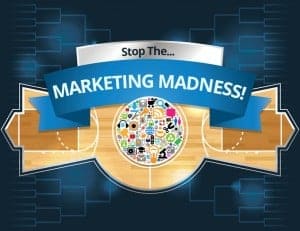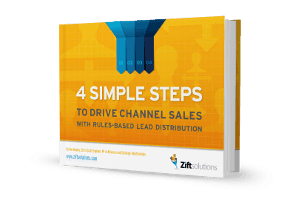 “March Madness” may work wonders for basketball fans, but the same can’t be said for marketing. It’s time to put an end to multi-tactic marketing madness.
“March Madness” may work wonders for basketball fans, but the same can’t be said for marketing. It’s time to put an end to multi-tactic marketing madness.
Sure, there are tons of marketing tactics to choose from, including online, print and search advertising, email newsletters, direct mail, webinars, trade shows and events, advertorials, social media and more. And a multi-tactic approach, when done right, can work wonders. However, you can’t and won’t build a successful campaign by starting with tactics.
Here at Zift, we work with thousands of companies from around the globe who want to capture and keep the attention of their prospects and clients. Many of them come to us for help and immediately announce, “We want to do an email campaign!” Or they are intent on purchasing Google ads. Or they’ve heard that they should be doing more events and want to plan one now! Our response? “Let’s take a step back and talk about what you are trying to accomplish: What is your goal?”
The fact is, you must clearly define your goal before starting any channel marketing program. Use your goal to develop a strategy. And it’s critical to understand both your goal and strategy before selecting the actual tactics your campaign will utilize. Unfortunately, too many people confuse goals with strategies and let tactics determine the course of their channel marketing activities, which does not work.
Goal > Strategy > Tactics
1. Goal:
Specific, measurable and results-oriented, a goal is how you “win the game.” Channel marketing goals should be tied to overall business goals and KPIs.
For example: Generate 10 sales qualified leads to help us bridge our Q1 revenue gap.
2. Strategy:
An idea or vision that conceptualizes how you can achieve your goal/s. Some possible strategies might include creating awareness, overcoming objections or enhancing product understanding. Winning strategies put customers first and demonstrate that you are listening and responding to client needs and providing value to the customer.
For example: Re-ignite current prospects that have stalled in our lead management process.
3. Tactic:
The individual actions you take or activity required to execute your strategy are tactics. Think of tactics as ingredients rather than the finished product. Your overarching goal and defined strategy should be the driving force behind the selection of campaign tactics.
For example: Create a series of emails with quality offers to nurture stalled leads.
Agree? Disagree? What’s your approach or advice? Let us know in the comments section below.
Also, be sure to check in with Channel Chatter for the next installment to learn more about tactic trends (what’s hot and what’s not) and how to effectively combine tactics to create a successful multi-tactic campaign.

4 Simple Steps to Drive Channel Sales with Rules-Based Lead Distribution
Find out how you can transform lead distribution and empower channel partner success with this insightful eBook!
David Buffaloe
As Senior Vice President of Marketing, David is responsible for all aspects of marketing including strategy, tactics and programs needed to create interest, demand and recognition for Zift Solutions.




